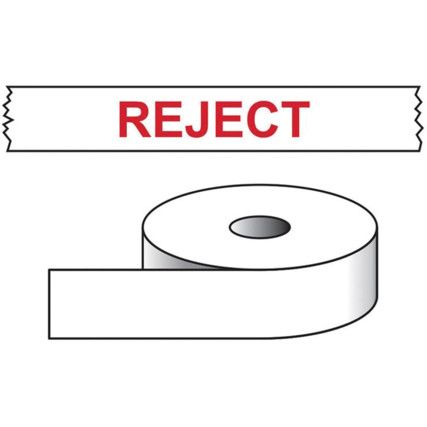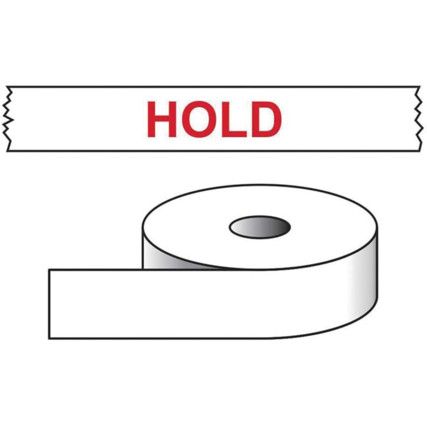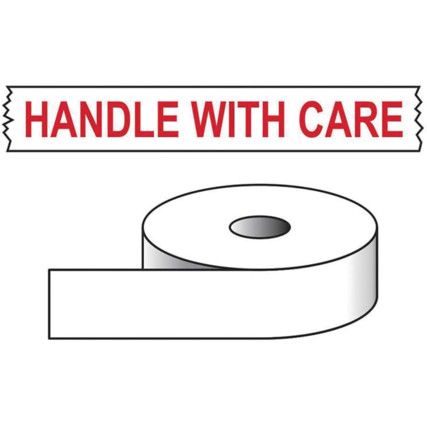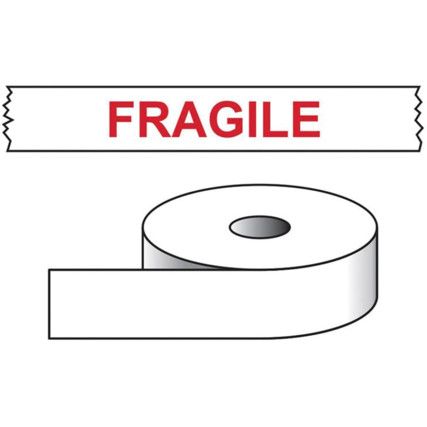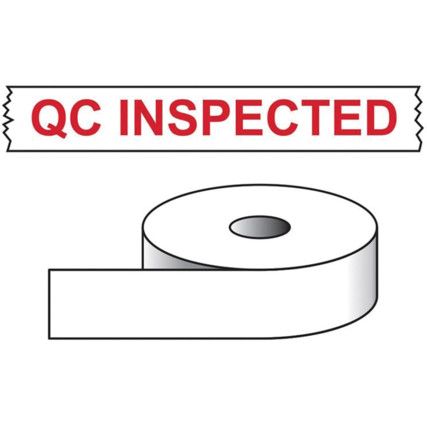Safety Tapes
Used primarily to cordon off an area or on packages to convey clear, important instructions to parcel handlers, safety tapes are a convenient, cost effective and easy way of providing instructions to keep package handlers and your package safe. Here at Cromwell, we have a wide range of safety tapes from our trusted exclusive brand Avon and leading national brand Pacplus®.
What are safety tapes?
Safety tapes, also known as hazard tapes or caution tapes, are adhesive tapes used to mark and highlight potential dangers or hazards in various environments.
Why safety tapes?
Safety tapes are used to convey warning messages or to signal instructions to ensure your package is handled with the proper care, such as "This way up", or to cordon off an area that is unsafe to personnel. Usually in a white and red colourway for maximum visibility and easy identification, safety tapes are designed for keeping package handlers and the recipient of the package safe as well as protecting the contents of the package to ensure it arrives undamaged. Safety tapes can display various messages to suit your needs and are available with various text displayed on them.
When are safety tapes used?
Safety tapes are useful across all industrial sectors as well as any institutional settings where it may be necessary to cordon off areas or make people aware of a hazard.
Safety tape types
There is a large array of messages that can be conveyed on safety tapes. Below, we've outlined the most commonly used types of safety tapes and have offered an example as to when this type of safety tape could be used and a suitable application to help you make an informed purchasing decision.
• Caution - Used to broadly denote that the product contents should be treated with hesitance. This kind of safety tape is also widely used when cordoning off areas that are potentially hazardous to personnel, but the hazard may not be immediately obvious to people entering the area.
• Fragile - As it sounds, safety tapes with a "Fragile" message denote that the package contents should be handled with care due to the fragile nature of the items inside. This is an easy and clear way of instructing package handlers and the recipient to be cautious when moving the package.
• Handle with care - Similarly to "Fragile" tape, safety tapes that carry the "Handle with care" messaging are designed to inform personnel handling packages that the contents are delicate and less robust than other kinds of contents. It can also be used when packages contain potentially dangerous or hazardous materials or liquids that may be harmful if they were to leak from the package.
• Rejected - Used predominantly in package sorting warehouses and other premises, safety tapes that read "Rejected" are an easy way of signalling that a package has not been accepted, normally due to improper postage or declaration of the contents.
• Accepted - The opposite of "Rejected" tape, safety tapes that read "Accepted" are once again, used primarily in parcel sorting depots to denote that a package has been checked and accepted as compliant with whatever regulations the company/package is subject to.
• This way up - Often found on packages that contain liquids that may spill or products that need to be kept in a certain configuration to best ensure the safety of the contents.
• Tamper evident - This type of safety tape is designed to denote when a package or product has been tampered with. If the tape is damaged, broken or torn, then it signals to the parcel handler that the package may have been tampered with.
Considerations when choosing a safety tape
By considering the following factors, you can select the most suitable safety tape that effectively communicates warnings, mitigates risks, and enhances safety in your desired setting.
• Visibility - Opt for tapes with high-contrast colors and clear, bold markings to ensure they are easily visible from a distance.
• Durability - Select tapes that are made from durable materials and can withstand the environmental conditions of the intended application. This may include resistance to water, chemicals, UV exposure, or abrasion.
• Adhesive strength - Ensure the tape has strong adhesive properties to securely stick to the surface. Some tapes have removable adhesives, which can be useful if temporary marking is required.
• Regulatory compliance - If you have specific safety regulations or industry standards to follow, make sure the chosen tapes meet the necessary compliance requirements.
• Application surface - Consider the surface where the tape will be applied. Some tapes are suitable for smooth surfaces, while others are designed for rough or textured surfaces.
• Specific requirements - Evaluate your specific needs, such as anti-slip properties, reflective qualities, or the ability to write or print on the tape.
FAQs
When to use caution tape vs danger tape?
Generally, tapes that read "danger" are used for more serious and immediate health hazards, whereas "caution" tapes are used to denote that vigilance should be exercised in an area, but that there may not be an immediate risk to health upon entering. As with all safety tapes, both caution and danger tapes should only be used as a temporary measure until either the hazard has been cleared or a more permanent solution is used to cordon off an unsafe area.
